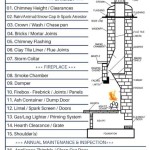Elevate Your Space: The Enduring Appeal of Fireplace Stacked Stone Tile
The fireplace, a traditional focal point of the home, is often a space where aesthetic enhancements can dramatically impact the overall ambiance. Fireplace stacked stone tile offers a versatile and visually compelling solution for homeowners seeking to modernize, rusticize, or simply refresh their existing fireplace surround. With a wide array of materials, colors, and textures available, stacked stone tile provides a customized look that complements diverse interior design styles.
Stacked stone tile, also known as ledge stone or dry stack stone, differentiates itself from traditional tile installations through its three-dimensional appearance. Instead of individual, flat tiles, stacked stone is composed of smaller, interlocking pieces of natural or manufactured stone adhered together to create a panel or veneer. When installed, these panels produce the illusion of a naturally stacked stone wall, showcasing depth and texture that adds visual interest to any space.
Aesthetic Versatility and Design Considerations
The inherent versatility of stacked stone tile makes it an ideal choice for a wide range of design aesthetics. Natural stone options, such as slate, quartzite, and travertine, provide unique variations in color and texture, ensuring that each installation is truly one-of-a-kind. These natural materials evoke a sense of rustic charm and organic beauty, seamlessly integrating with farmhouse, contemporary, and traditional interiors.
Manufactured stone, also known as faux stone, offers a more budget-friendly alternative while still replicating the look and feel of natural stone. These engineered products are often lighter in weight and easier to install, making them a practical choice for DIY projects and retrofits. Manufactured stone also offers greater consistency in color and texture compared to natural stone, allowing for a more predictable and uniform appearance. The color palette ranges from cool grays and whites to warm browns and earthy tones, catering to various design preferences.
When selecting stacked stone tile for a fireplace, consider the overall design scheme of the room. Lighter colors, such as cream or off-white, can create a sense of airiness and expand the visual space of a smaller room. Darker hues, like charcoal gray or deep brown, can add drama and sophistication to a larger living area. The size and shape of the stone pieces also play a crucial role in achieving the desired effect. Larger, more prominent stones tend to create a bolder and more rugged appearance, while smaller, more refined stones offer a more elegant and contemporary look. Pay attention to the grout lines, as well – the use of contrasting grout can accentuate the individual stone pieces, while a matching grout will create a more seamless and unified appearance.
Material Selection: Natural Stone vs. Manufactured Stone
The choice between natural and manufactured stacked stone tile ultimately depends on budget, aesthetic preferences, and project requirements. Natural stone offers unparalleled beauty and authenticity, with each piece showcasing unique variations in color, texture, and veining. This natural variation adds character and depth to the installation, creating a truly one-of-a-kind focal point. However, natural stone can be more expensive and may require specialized installation techniques due to its weight and potential for inconsistencies in size and shape.
Manufactured stone provides a cost-effective alternative that closely mimics the appearance of natural stone. These engineered products are typically lighter in weight, making them easier to handle and install. They are also more resistant to moisture and staining compared to some natural stone options. Manufactured stone also offers greater consistency in color and texture, ensuring a uniform and predictable appearance. This can be particularly beneficial for homeowners seeking a more modern or minimalist design aesthetic. When selecting manufactured stone, it is crucial to choose a high-quality product from a reputable manufacturer to ensure durability and longevity. Look for options that are specifically designed for fireplace applications and meet the necessary safety standards.
Durability is a key factor in selecting the right material. Natural stones like granite and quartzite are highly resistant to heat and scratching, making them ideal for high-traffic areas. However, more porous stones like limestone and travertine require sealing to prevent staining and moisture damage. Manufactured stone often incorporates sealants during the manufacturing process, offering enhanced protection against the elements. Regardless of the material chosen, proper maintenance is essential to preserving the beauty and integrity of the stacked stone tile. Regular cleaning with a mild detergent and water will help prevent the buildup of dirt and grime. Periodic sealing may be necessary to maintain the protection of the stone and prevent staining.
Installation Considerations and Best Practices
Proper installation is crucial to ensuring the longevity and aesthetic appeal of fireplace stacked stone tile. While some homeowners may opt for a DIY approach, professional installation is recommended, especially for complex installations or when working with natural stone. A qualified installer will have the necessary expertise and tools to ensure proper substrate preparation, accurate alignment, and secure adhesion.
The first step in the installation process is preparing the substrate. The surface must be clean, dry, and level to ensure proper adhesion of the tile. If the existing fireplace surround is painted or textured, it may be necessary to remove these prior to installation. A cement backer board is typically installed over the existing surface to provide a stable and moisture-resistant substrate for the stacked stone. The cement backer board should be securely fastened to the underlying framing with screws.
Once the substrate is prepared, the stacked stone tile can be installed using a high-quality thin-set mortar specifically designed for stone applications. The mortar should be applied evenly to the back of the tile, and the tile should be pressed firmly against the substrate. It is important to maintain consistent spacing between the panels to create a uniform and natural look. Using shims or spacers can help ensure proper alignment. As the installation progresses, regularly check the level and alignment of the tiles to prevent any deviations. After the mortar has cured, grout can be applied to fill any gaps between the panels. Select a grout color that complements the stone and the overall design scheme. After the grout has dried, it can be sealed to prevent staining and moisture damage. It is important follow manufacturer's instructions for the thin-set mortar, grout and sealer.
.jpg?strip=all)
Tips And Tools For Professional Stacked Stone Fireplaces

Is A Cozy Stacked Stone Fireplace Your Next Dream Project

Natural Stacked Stone Veneer Fireplace Ideas

12 Stacked Stone Fireplace Ideas For Optimal Coziness

12 Stacked Stone Fireplace Ideas For Optimal Coziness

4 Natural Stacked Stone Fireplaces For Your Dream Design

5 Stacked Stone Surrounds Travertine Quartzite Or Marble

Is A Cozy Stacked Stone Fireplace Your Next Dream Project

Natural Stacked Stone Veneer Fireplace Ideas

Contemporary Living Room Stacked Stone Fireplace Wooden Mantel Glass Coffee Table Modern Fireplaces Wall
Related Posts








